 April 2012 Tank of the Month (psteeleb)
April 2012 Tank of the Month (psteeleb)
April 2012 Tank of the Month (psteeleb)
Pete Blair's (psteeleb) Reef Aquarium
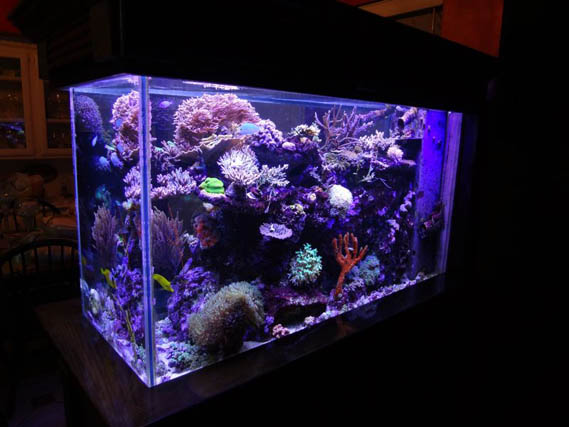 |
Introduction
First off, I want to say a big thank you to those who submitted my system for Tank of the Month and the staff at RC for their consideration and help making it happen. Having a system go from scratch to even being considered for the TOTM that is less than two years old is quite the honor.
The best advice I can offer for those starting this hobby is “ask, listen, and be patient”. Strive to understand the nuances of what your trying to accomplish and accept that we will never fully understand nor replicate the complexities, relationships, interrelationships, and beauty of what mother nature has accomplished over the millennia. There are some fundamentals in this hobby that are a must for success, but also understand that success seems to so often hinge on the simplest of things.
 |
Background
I always had aquariums growing up. In 1975, I went into a local fish store in southern California and saw several displays with saltwater fish. It was my first exposure to a saltwater aquarium and I had to have one, or two, or maybe more. I think I ended up with about eight saltwater aquariums running at one time.
My first saltwater tank was a 55 US gallon that I built into a room divider. It had an under-gravel filter that was powered by a combination of air stones and power heads. It also had four T12 lamps and ran a small hang-on-filter with carbon filtration. I kept a few damsels, a yellow tang, a pair of clownfish, and a few anemones in the tank. I also had several specie-specific aquariums that ranged from 10 US gallons to 35 US gallons, but as my career developed I had to stay pretty mobile, so ended up dropping out of the hobby around 1985.
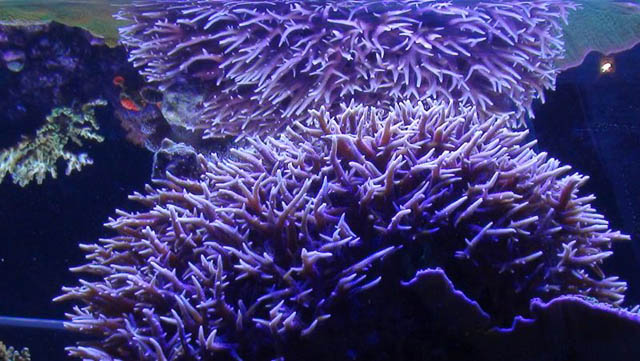 |
Current Tank
In 2005, we moved back to Texas with hopes of being able to stay put for a while. I decided at this time to get back in the hobby. After doing a ton of study on the Internet I found Reef Central, and a local forum DFWMAS. I started asking a bunch of questions and decided to get a large aquarium to try a mixed reef. I ended up buying a used 300 gallon tank and kept it running for about 3 years. It was a tremendous learning experience. I fought off all kinds of coral diseases, pests, you name it I probably had to deal with it at one time or the other. Eventually, things settled in and looking great until one night at 2 AM while out of town my wife calls to tell me the aquarium was leaking. Its a long story, but in summary it was a complete loss. I found myself out of the hobby again for about 9 months before I decided to downsize to my current 110 gallon. Though the 300 gallon was a loss the experience gained cannot be under estimated as it put me in the right “take your time and do it right” mind set.
It took me a couple months just to decide what size aquarium to go back into the hobby with. I contemplated sizes from 100 gallons to 500 US gallon systems, but again due to my work travels decided to downsize with intent to make the system inexpensive, efficient, low maintenance and yet capable of keeping SPS and maybe even some NPS (non-photosynthetic) corals.
I ended up going with a peninsula style 110 US gallon aquarium that measures 48” x 18” x 30”. Of course wanting all the bells and whistles I had on my 300g, my biggest challenge was space. I often feel tank maintenance is easy when compared to figuring out how to keep an RO/DI topoff container, a three chamber sump / refugium, and seven reactors (GFO, Bio-Pellet, Nitrate media, Calcium, Kalk, ozone and GAC), pumps, fans, lights and wiring all contained in the small footprint of the stand.
System Profile
• Display tank: 110 US gallon (48" x 18" x 30")
• Sump: 28" x 18" x 15.5"; 3 chambers with DSB
• Skimmer: Avast CS1 kit, modified to fit in 8.5"
• Lighting: 42x 3W Cree Royal Blue LEDs, 18x 3W Cree Cool White LEDs and T5s
• Bulbs: 2x UV Actinic White (12k), Giesemann Aquablue Plus, Korallen-Zucht Fiji Purple
• Controller: APEX base unit, 2x EB8s & I/O
• Return Pump: Mag 12
• Circulation: 2x MJ 900s with propellar modifications and Tunze Nano Wavebox
• Calcium Reactor: Geo 4x18 calcium reactor
• Other Reactors: 3x TLF 150s, TLF Kalk, Avast Ozone, Avast MR5
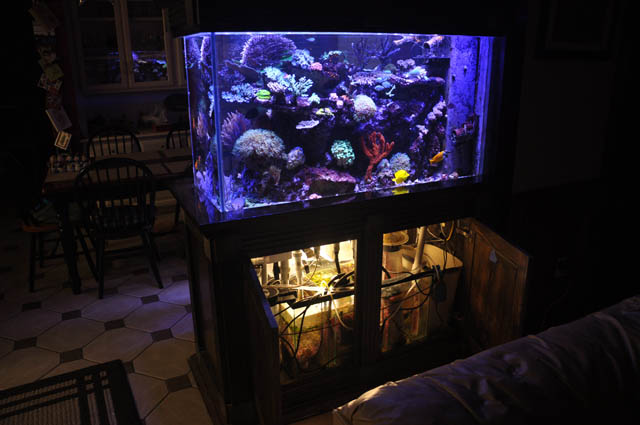 |
Aquarium Setup
As I still travel quite a bit with my job, tank automation and low maintenance have been the primary drivers behind my thoughts and designs of the 110 gallon build. Additionally, with limited space and no wall behind the tank to hide things the size or footprint of the equipment was crucial to my decision on what to use.
I bought the aquarium and stand used. I resealed the tank and cleaned it with a mild acid wash followed by a rinse and bleaching to sterilize it. Once the system was plumbed I repeated the procedure to make sure all the plumbing was clean and sterile. The tank/stand combo came with a 30 gallon sump that needed a good cleaning and some work to fit my plans. I started by removing and shortening the old baffles by two inches. I did this to allow for a power off tank drain-in and have capacity for those Murphy’s Law moments, something I learned all to many times with my 300 gallon system.
The sump design accommodates a common approach using three chambers. The first chamber accommodates the tank overflow and skimmer. The second chamber or refugium houses a deep sand bed of about 4 inches, live rock, and macro algae. The 3rd chamber houses the heater and main pump return. Like everything else under the tank the sump chambers are small and utilized to the maximum potential.
The skimmer I use is a slightly modified Avast Marine CS1 cone skimmer with the Swabbie neck cleaner. The only modification made was to the base plates where I cut them down about a half inch to fit in my sump area. The Swabbie neck cleaner cuts way down on maintenance, instead of cleaning the skimmer neck out every 2-3 days I clean the unit monthly. The skimate flows from the collection cup to a DIY (do-it-yourself) holding container that has a float switch that shuts the skimmer off and sounds an alarm when full.
The macro algae in the sump used for nutrient exports is a mixture of caulerpa and chaetomorpha. The area is lit with two $5 clamp-on lights from the local hardware store using 5500k florescent coil bulbs. I run the sump lights 24/7 to prevent the caulerpa from going asexual, but eventually plan to just have the cheato so I can run the lights on a reverse cycle from the main display to help curb pH swings. I also use a 9 inch clip-on fan for cooling.
I run 3 TLF reactors; one with GFO to reduce Phosphates, one with bio-pellets to reduce Nitrates and one with GAC to reduce household pollutants and toxins that can be produced by corals or as a byproduct of waste breakdown and consumption.
The calcium reactor is a modified Geo 418 model. I reversed the flow, added a built in bubble counter, and pH probe holder. I went with this older model for its smaller footprint. I also found and use a small footprint #7 CO2 tank.
In addition to the calcium reactor I also run a kalk reactor. Even though saturated kalk does not meet the calcium and alkalinity demands of the tank, I have found there are other benefits of running kalk. The kalk reactor runs about 15 seconds every hour as long as the system pH is below 8.3. In total it will add about a gallon of saturated kalk water to the tank a day, the balance of the evaporation replacement is by a pretty standard auto top off float switch. To improve skimming and water clarity I am in process of adding an ozone reactor, again I decided to go with an Avast kit.
Daily maintenance includes glass cleaning, replenishing the top-off water and feeding. Weekly I will usually do a 5-10 gallon water change, empty the skimmer overflow container and check the tank parameters. If I remember I add more kalk to the reactor. On a monthly basis I will clean the skimmer, change the GFO, and maytake time to clean the sump, a pump, or power head.
My biggest challenge to date with this tank has been maintaining nitrates at an acceptable level while maintaining a high nutrient level in the tank to feed the non-photosynthetic corals. I struggled with carbon dosing, but decided to try biopellets and as expected found them to be very detrimental to maintaining a diverse biological balance as part of the mini ecosystems we strive for. I know there are many success stories out there but super charging bacteria populations does hinder other lifeforms from becoming established and in cases of established systems can destroy them by competing for food sources. That all said I am still experimenting with the biopellets on a limited basis to see if I can maintain some high degree of biodiversity, high nutrients and low nitrates. So stay tuned.
You can spend a lot of money building a very complex system in this hobby and still fail. Sometimes I feel like my little 29 US gallon saltwater tank that has no sump, a minimal skimmer, and no controller is there just to remind me that simple can be successful. My 110 gallon build is somewhere in between the simple and complex. I’d categorize it as rebuilt classic that has been upgraded with a hybrid engine. Secondly to having nature’s beauty on display in my family room I enjoy having a system that runs dead quiet and is an effective use of space and energy/cost efficient.
Lighting
When I first started this build I seriously considering using metal halides with VHO super actinics as a supplement, but knew there would be some serious heat issues. My first lighting arrangement was a set of four T5s with two VHO super actinics. I also added a moon light strip in the center of the build as shown. Initially, I was very pleased with the colors the T5's provided, but I missed the shimmer effect the halides provided and decided to hit the forums to read up on LED builds.
I determined that I had three goals for the LED build; 1) provide enough light and penetration to achieve the shimmer effect, 2) highlight corals on the front and back walls of the island and, 3) be situated in the space I allowed in for them in the canopy. My first LED undertaking was making two lighting bars that held 12x 3w Royal Blue LEDs each. I liked the LEDs so much it did not take long to decide to replace my VHOs with two more LED lighting bars. This time I went with a 2 to 1 mix Royal Blues to Cool Whites mounted to long heat sinks.
|
Currently, I still run the mixture of T5s and LEDs. From front to back:
|
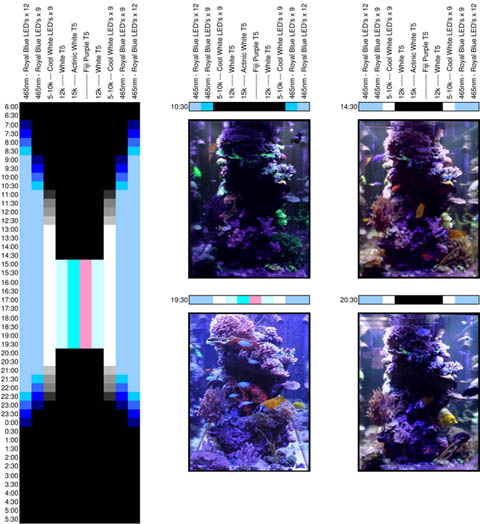 |
 |
APEX Control Setup
Tank control is through the APEX, my decision to go with this product was mainly due to the built-in Internet accessibility feature. The ability to not only see what’s going on in the tank while away, but being able to make adjustments as needed were the main reasons for my decision. The APEX unit controls the following:
- LED lights (3 series) all on timers and dimmers (see light schedule for details)
- T5 lights that are also shut down in the event of the temperature rising above the 83 degree set point.
- Heater control provides redundancy
- Fans for cooling
- Typical to most calcium reactors the pH is controlled via Co2 solenoid. The unit is also only run during the lights on cycles to create less pH swing and has two alarm settings that let me know if the flow through the reactor slows (by prolonged solenoid closed durations), or if the CO2 bottle may be empty (by prolonged solenoid open durations).
- The kalk reactor is set to administer a slight dosing of kalkwasser every hour for 15 seconds and is also shut down in the event the tank pH exceeds 8.3.
- Main pump
- Skimmer
- Skimmer neck cleaner set to run one minute every 8 hours.
- The Tunze Nano wave box is programmed to run only during the daylight hours and shut off for feeding the cycles.
The auto-topoff (ATO) is run independent of the APEX, but I have plans on utilizing additional float swithches to provide alarms in the event of water levels becoming too high or too low in the sump or RO/DI water reservoir. The ozone reactor will be run by an independent ORP controller and will be monitored by the APEX as a secondary means of shutdown.
Feeding
The tank gets feed daily a mixture of products in various sizes. In the morning I will feed phytoplankton, mainly for the sponges and pod population. Later in the day I will feed pellets to the fish primarily to get some sustenance in the larger fish. Next up is a fairly heavy feeding of Cyclopeze. Most of the fish, the large polyp stonies, and many of the softies in the tank consume the cyclopeze. It also stimulates a feeding response with most all the corals and prepares them for the final feeding that is a mixture of varying sized food products including mysis shrimp, rotifers, and ReefPearls. The mysis shrimp feed all the fish including the anthias, but just as important it feeds the large polyp stonies like the dendros & duncans. The rotifers and ReefPearls provide a combination of smaller sized foods for the small polyped stonies, and filter feeders including the gorgonian.
When I decided to start keeping Gorgonia, I had to increase feeding. The increase in nutrients was apparently more then the system as a whole could keep up with and resulted in elevated nitrates. I did not want to depend on carbon dosing, but decided to try a biopellet reactor anyway. I started the biopellet reactor with just using the TLF screen kit. However I decided I wanted to maintain a high flow in the reactor, but be able to control and slow down the flow going through the reactor. Using a MaxiJet pump and a few ½ inch pipe fittings I was able to make a closed recirculation system allowing the reactor to operate like a standard Ca reactor. The entire mod only cost a few dollars and left the TLF 1500 reactor intact so it can return to normal use at a later date if so desired.
Parameters
I primarily use Salifert for; Mg, PO4, NO3, Ca & Alk. I also use Hanna Checkers for PO4 and Alk, and Red Sea pro for NO3.
|
Water Parameters:
|
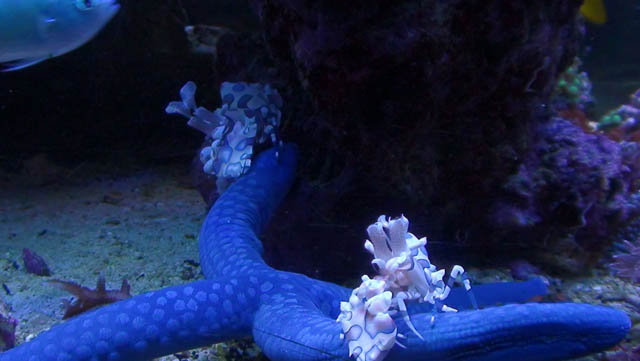 |
Livestock
My fish selection is based on personality, color, and compatibility with other fish and reef tank inhabitants. My goal is to have all the fish feel comfortable and to provide them with a healthy and stress free environment. I also like to have the larger fish graze in the tank so I avoid feeding Nori to the tangs and dwarf angels. I also keep a small group of blue/green reef chromis and a few anthias to add that extra movement to the tank and a splash of bright colors.
|
Fish:
Invertebrates:
SPS:
LPS:
Softies:
|
Acknowledgements
Over the years there have been many people that have inspired me. Although I guess in some ways I am an old timer I still find myself asking questions and seeking answers. Through that process of asking and seeking I have the utmost respect for many of the moderators on Reef Central.
Seven years ago, when I decided to get back into the saltwater hobby. I found that the internet was a powerful tool with lots of great information and some not so great. At first I found myself constantly going to Melev’s reef site and was surprised to find he was a local to the DFW area and at the time president of the DFWMAS, so I joined and started attending the monthly meetings. As a member of a local club I was able to connect with many of the other local hobbyist and made it a point learn as much as I could from their experiences. Two others that come to mind that inspired as I was re-entering the hobby were Servo (Ryan) and Fish2morrow (Robert).
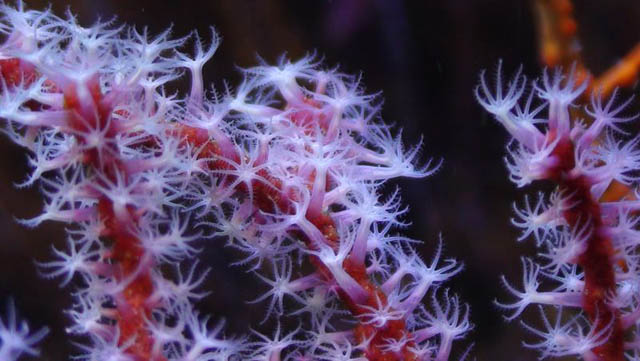 |
Feel free to comment or ask questions about my tank in the Tank of the Month thread on Reef Central.



